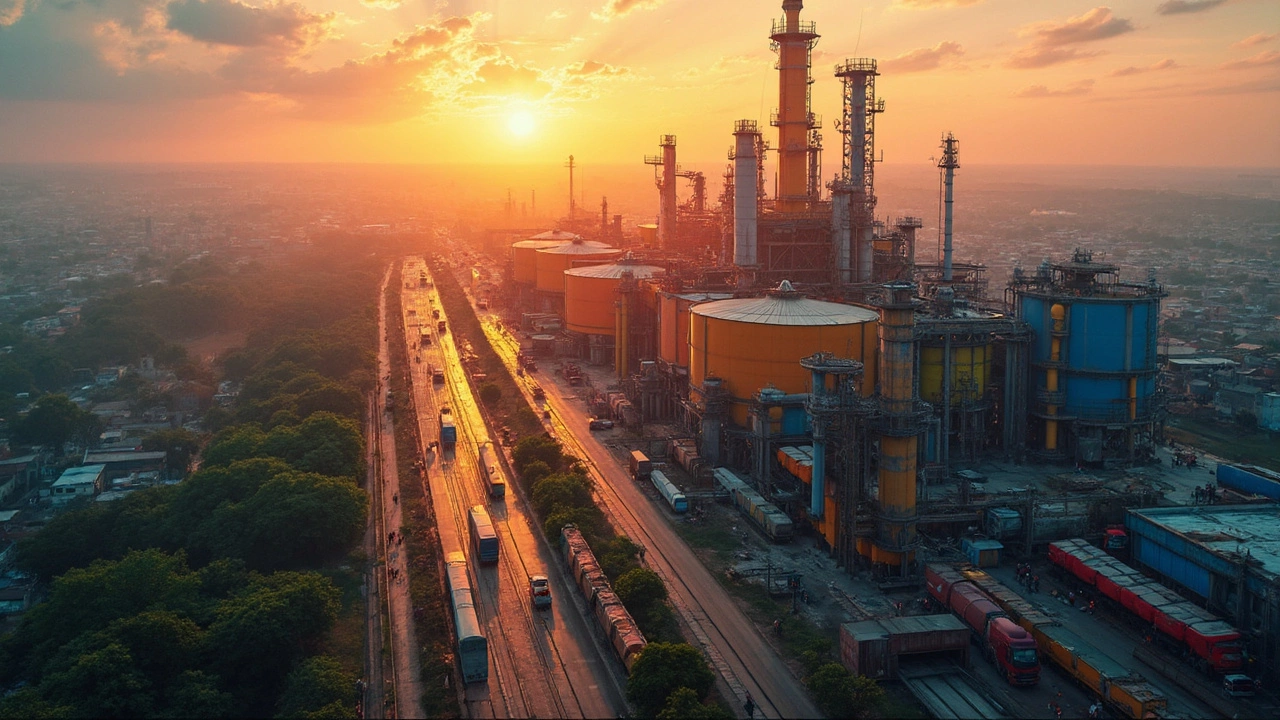Chemical Demand Shaping India’s Manufacturing Future
When looking at chemical demand, the total need for chemicals across sectors such as pharma, plastics, and agro‑chemicals, you also have to consider chemical industry, the network of producers that turn raw feedstock into basic and specialty chemicals and the broader manufacturing sector, the backbone of India's economic growth that consumes the bulk of these chemicals. Together they form a loop: chemical demand influences production capacity, while the industry's output feeds the manufacturing engine. This relationship is the core of today’s market dynamics.
What Fuels the Surge in Chemical Demand?
Population growth and rising incomes push up demand for medicines, personal care items, and packaged foods, all of which need specific chemicals. The pharma industry alone accounts for a sizable slice of the market, because active pharmaceutical ingredients (APIs) and excipients are chemical‑intensive. Meanwhile, the plastic boom – driven by packaging, automotive parts, and construction – adds another layer of demand. A simple way to see it: chemical demand requires raw material availability, modern processing technology, and a consistent regulatory framework. Recent policy pushes for self‑reliance in strategic chemicals have also spurred domestic capacity building, further lifting the demand curve.
Another strong driver is the agro‑chemical sector, where fertilizers and pesticides are essential for meeting food security goals. Renewable energy projects, especially solar panel manufacturing and battery production, also need specialty chemicals for coatings and electrolytes. Each of these sub‑markets creates its own demand pattern, shaping how manufacturers plan inventory and investment.
Supply gaps become glaring when you examine which chemicals India still imports. A recent analysis highlighted a list of chemicals that are not produced locally, exposing a reliance on overseas sources for high‑value intermediates. This import dependence means that chemical demand influences import volumes and trade balances. Companies that can fill these gaps—by setting up new plants or licensing technology—stand to capture significant market share.
Opportunities abound for startups and established players alike. The top five chemical manufacturers worldwide—BASF, Dow, SABIC, Sinopec, and Ineos—are expanding their footprints in Asia, eyeing partnerships with Indian firms. Government incentives for R&D, tax breaks for green chemistry, and a push for circular economies are reshaping the value chain. Firms that adopt advanced process analytics, AI‑driven forecasting, or sustainable feedstocks can meet the rising demand while staying cost‑effective.
Below you’ll find a hand‑picked collection of articles that dive deeper into each of these angles: from product ideas for manufacturing startups to the latest rankings of Indian pharma giants, from insights on plastic waste to the chemicals India still imports. Use these resources to gauge market size, spot untapped niches, and build a strategy that aligns with the evolving chemical demand landscape.
